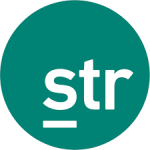HENDERSONVILLE, Tennessee, and MILWAUKEE — March 14, 2022 — The Baird/STR Hotel Stock Index rose 4.1% in February to a level of 5,753. Year to date through the first two months of 2022, the stock index increased 0.2%.
“Hotel stocks posted gains in February and were relative outperformers for the third consecutive month,” said Michael Bellisario, senior hotel research analyst and director at Baird. “Despite increased stock market volatility and growing geopolitical concerns, investors remained focused on the reopening momentum and improving demand trends as Omicron-related disruptions are in the rearview mirror and corporations’ back-to-office plans are moving forward. A more normalized travel environment is expected to unfold over the next several months, in our opinion, and we are keeping a close eye on rising gas prices and any potential impact on near-term drive-to leisure demand.”
“The decline in Omicron cases and subsequent easing of mask mandates and restrictions is expected to have a positive impact on spring room demand in both the corporate and leisure segments,” said Amanda Hite, STR president. “Occupancy and room rates showed continued improvement in February with limited-service hotels displaying the most substantial gains toward pre-pandemic levels. While nominal ADR has been at or above 2019 comparables, inflation pressures continue to weigh on owner and investor minds as these healthy room rates are not translating to equally strong profit growth as expenses, especially labor costs, continue to rise.”
In February, the Baird/STR Hotel Stock Index outperformed both the S&P 500 (-3.1%) and the MSCI US REIT Index (-3.3%).
The Hotel Brand sub-index jumped 4.2% from January to 10,370, while the Hotel REIT sub-index increased 3.5% to 1,269.
About the Baird/STR Hotel Stock Index and Sub-Indices
The Baird/STR Hotel Stock Index was set to equal 1,000 on 1 January 2000. Last cycle, the Index peaked at 3,178 on 5 July 2007. The Index’s low point occurred on 6 March 2009 when it dropped to 573.
The Hotel Brand sub-index was set to equal 1,000 on 1 January 2000. Last cycle, the sub-index peaked at 3,407 on 5 July 2007. The sub-index’s low point occurred on 6 March 2009 when it dropped to 722.
The Hotel REIT sub-index was set to equal 1,000 on 1 January 2000. Last cycle, the sub-index peaked at 2,555 on 2 February 2007. The sub-index’s low point occurred on 5 March 2009 when it dropped to 298.
The Baird/STR Hotel Stock Index and sub-indices are available exclusively on Hotel News Now. The indices are cobranded and were created by Robert W. Baird & Co. (Baird) and STR. The market-cap-weighted, price-only indices comprise 20 of the largest market-capitalization hotel companies publicly traded on a U.S. exchange and attempt to characterize the performance of hotel stocks. The Index and sub-indices are maintained by Baird and hosted on Hotel News Now, are not actively managed, and no direct investment can be made in them.
As of 28 February 2022, the companies that comprised the Baird/STR Hotel Stock Index included: Apple Hospitality REIT, Ashford Hospitality Trust, Chatham Lodging Trust, Choice Hotels International, DiamondRock Hospitality Company, Hersha Hospitality Trust, Hilton Inc., Host Hotels & Resorts, Hyatt Hotels, InterContinental Hotels Group, Marriott International, Park Hotels & Resorts, Inc., Pebblebrook Hotel Trust, RLJ Lodging Trust, Ryman Hospitality Properties, Service Properties Trust, Summit Hotel Properties, Sunstone Hotel Investors, Wyndham Hotels & Resorts, and Xenia Hotels & Resorts.
This communication is not a call to action to engage in a securities transaction and has not been individually tailored to a specific client or targeted group of clients. Research reports on the companies identified in this communication are provided by Robert W. Baird & Co. Incorporated, and are available to clients through their Baird Financial Advisor. This communication does not provide recipients with information or advice that is sufficient on which to base an investment decision. This communication does not take into account the specific investment objectives, financial situation or need of any particular client and may not be suitable for all types of investors. Recipients should consider the contents of this communication as a single factor in making an investment decision. Additional fundamental and other analyses would be required to make an investment decision about any individual security identified in this release.



